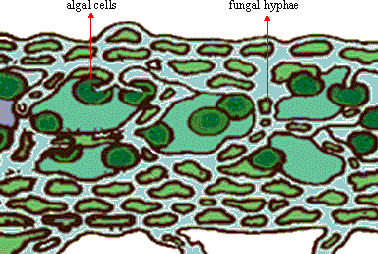|
PinkMonkey Online Study Guide-Biology
The protozoans fall into following four groups:
1. Sarcodina : They have no definite shape, move by pseudopodia and reproduce by binary fission.
Example: Entamoeba : These are ameba-like animals
with one or two pseudopodia, single nucleus but no contractile vacuole.
It includes a number of species which are parasitic. The best known is
Entamoeba histolytica, which causes amebic dysentery.
2. Mastigophora or flagellata : They move by one or two whip-like structures called flagella and reproduce by longitudinal binary fission.
Example : Euglena : It is a fresh water protozoon
with spindle-shaped body and a single flagellum. It shows cytostome and
cytopharynx, but like plant, it also possesses chloroplasts.
3. Ciliophora : They have definite shape, move by cilia and mostly possess two nuclei.
Example : Paramecium: A fresh water protozoon with definite
shape like the sole of a slipper. Locomotion takes place by cilia. The
animal has usually two nuclei and two contractile vacuoles. It reproduces
by simple type of sexual reproduction called conjugation.
4. Sporozoa : These are parasitic forms. The locomotory organelles, food vacuoles and contractile vacuoles are absent.
Example: Plasmodium: An intracellular blood parasite
causing malaria. The life cycle is completed in two hosts, namely man
and mosquito.
Economic importance: Most of the protozoa are harmless
but there are a few parasitic forms, such as Plasmodium, which
causes malarial fever, Trypanosoma which develops sleeping sickness,
and Entamoeba histolytica which causes dysentery. Protozoa are
useful in sewage disposal.
Symbiotic forms of Protista
These are the organisms of different species which live in intimate relationship for mutual benefit. Some symbiotic forms are described below:
Examples are lichen, and Trichonympha in the intestine
of termites..
1. Lichen : It is an obligatory association between,
and plant, which together form a closely integrated unit called a lichen.
The body of the lichen is composed of branching hyphae of the fungus which
harbor algal cells. The fungus gets food synthesized by the alga while
the alga in return gets shelter, moisture and minerals from the fungal
partner.
 Figure 14.25 Diagram of a Lichen Figure 14.25 Diagram of a Lichen
Economic importance : Lichens are used as food
by human beings. They are also used in medicine, as dye stuffs for tanning
hide into leather, etc. some like Usnea, are responsible for skin
diseases, respiratory allergy etc.
2. Root tubercles : An obligatory association
between plants and microbes, i.e. leguminous plant and the bacteria called
Rhizobium. The latter are nitrogen fixing bacteria living in the
root modules of leguminous plants like pea, bean, etc. Rhizobium fixes
free nitrogen in the form of nitrates and makes it available to the plant
and in return gets food and shelter from the latter.
|